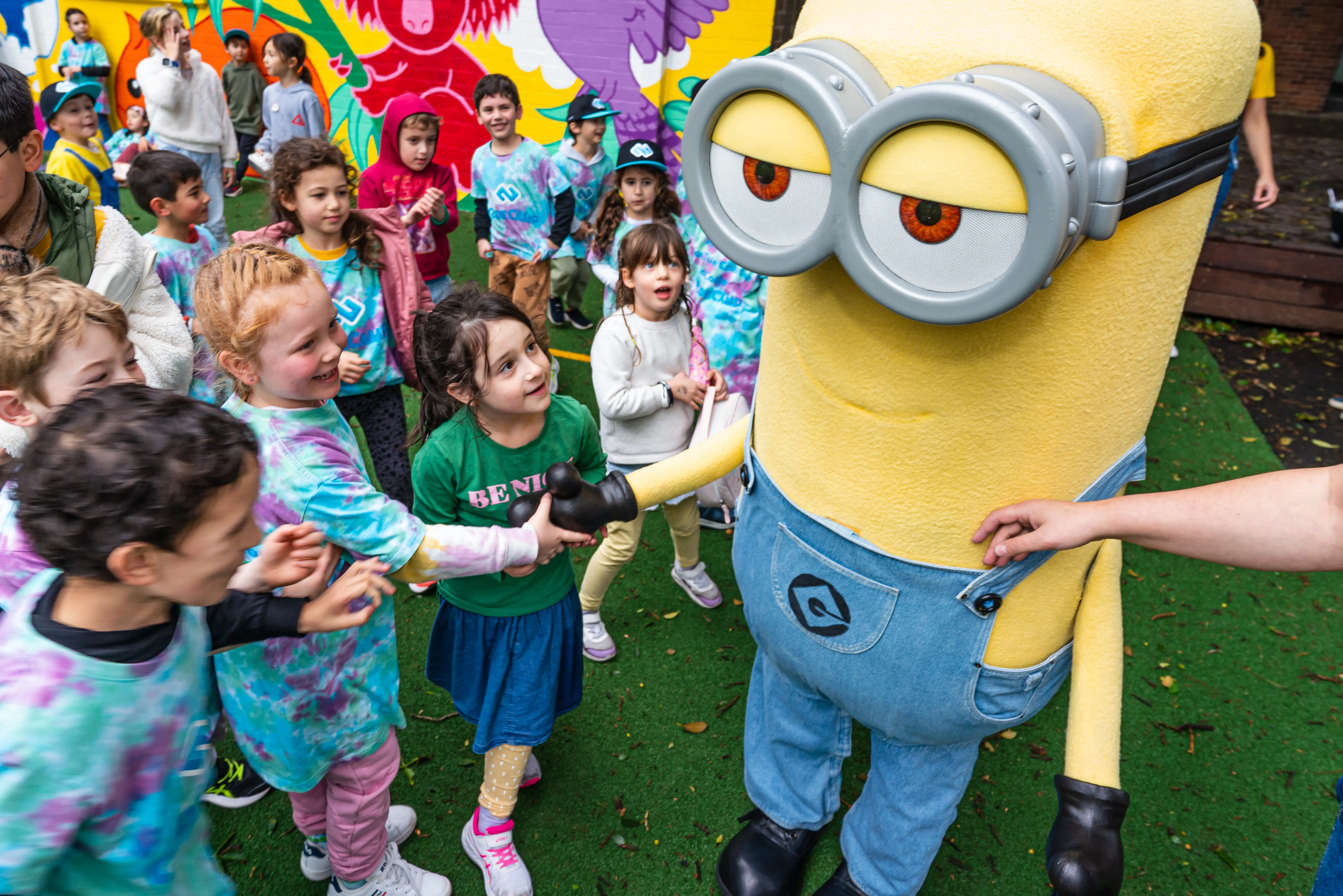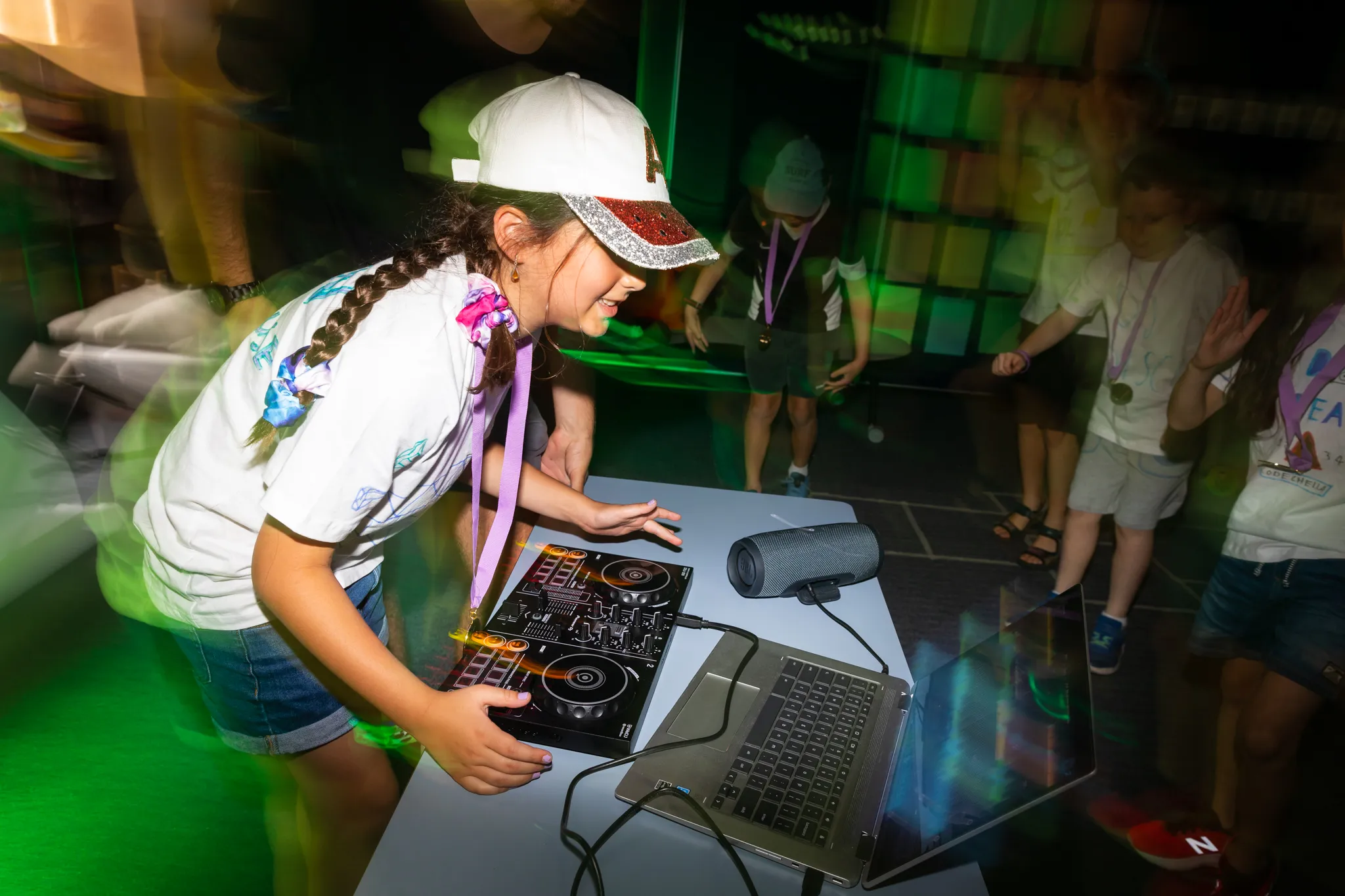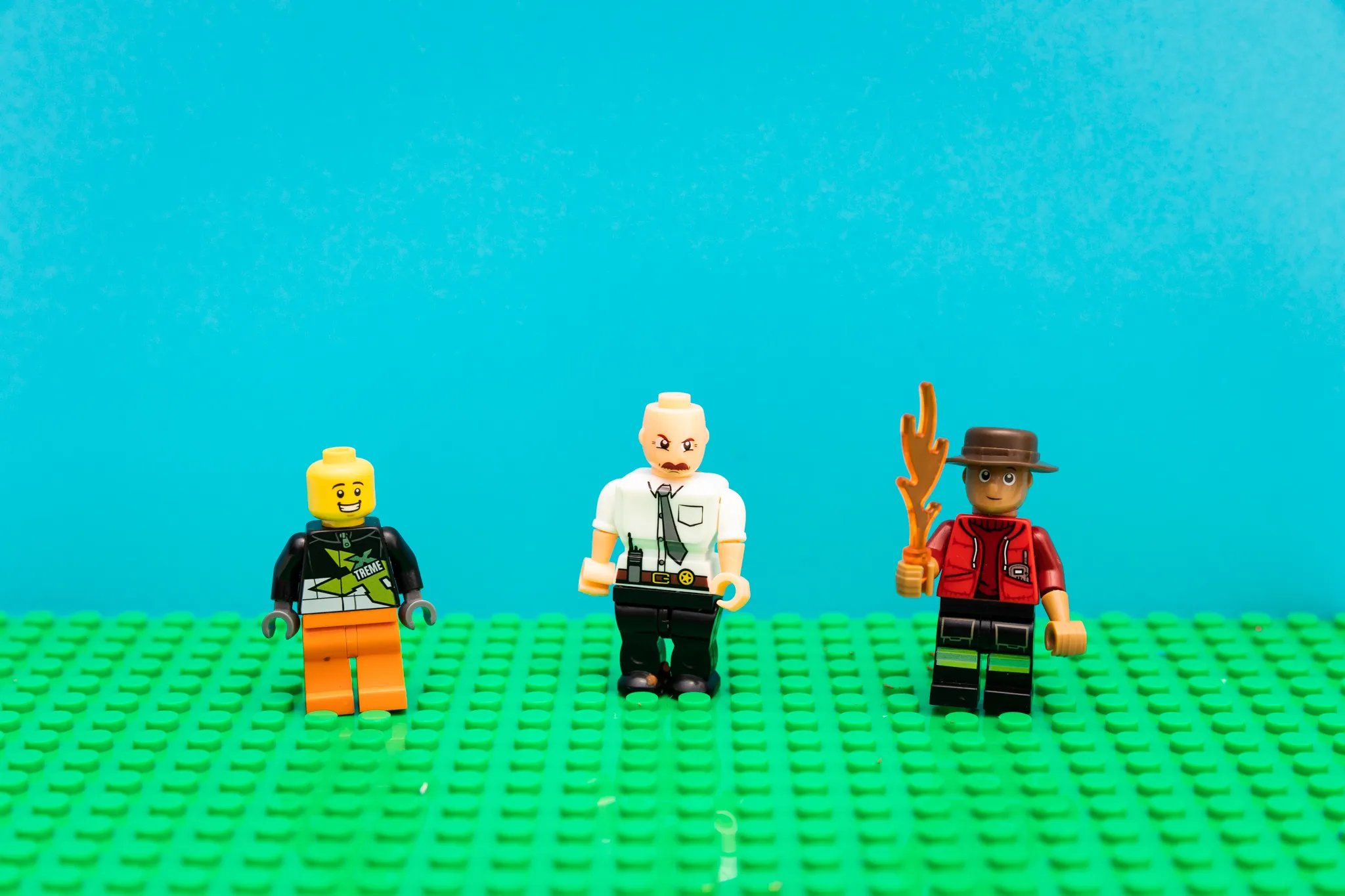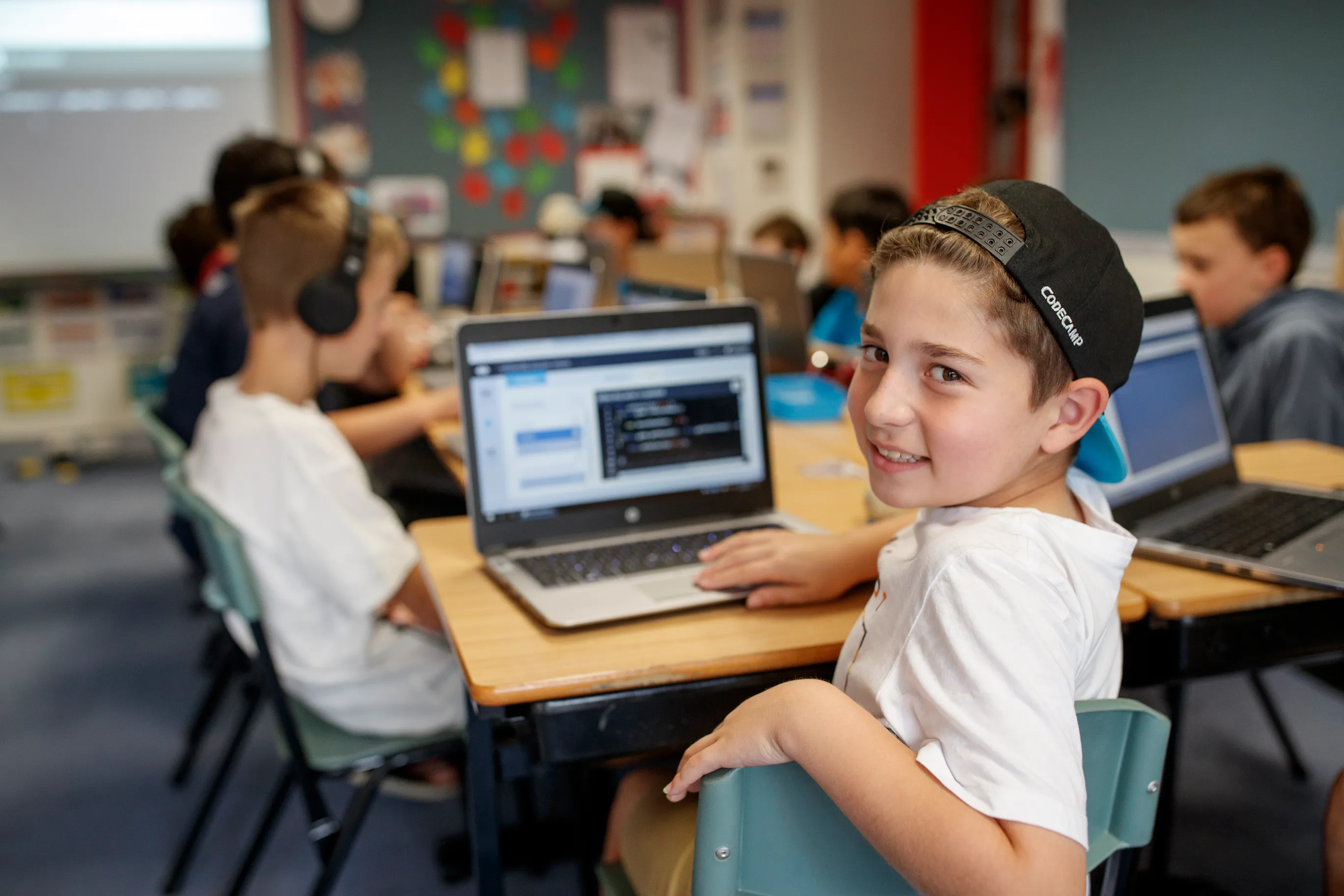
Safe Screen Ideas For Kids Before Bed
, a children’s technology and development expert, author and mum.
In the
I deliver, I suggest that parents establish a ‘digital curfew’ so that technology doesn’t interfere with kids’ sleep.
Ideally, 90 minutes before your child sleeps is recommended to be screen-free, but even 30 or 60-minutes screen-free before bed will make a difference to kids’ sleep. There are two prime reasons for avoiding screens before sleep, especially tablets, mobile devices and handheld gaming devices-
// Screens (particularly touchscreens which are usually interactive) can have an arousal effect on the brain. Playing games or engaging in interactive activities, which is often the case with these devices can excite kids. The rapid-fire, fast-paced screen action can hyper-arouse the brain, which can in turn delay the onset of sleep; and
// Most tablet and mobile devices have light-emitting diodes that give off blue wavelength light. The blue light hampers the body’s production of melatonin (which kids and teens need to produce to help them fall asleep easily), making kids alert when they should feel sleepy, meaning it can take them longer to fall asleep.
You can find our more here about kids and screens and sleep.
However, as a mum I understand that sometimes a digital cut-off time before bed isn’t attainable. I hear from many (worried) parents after my seminars, that sometimes their child likes using technology before they go to sleep. It helps them to relax and calm down and they dread the thought of having complete completely screen-free before bedtime is a little overwhelming, so they’re after some screenless and/or safe activities for before bed.
If your child wants to use technology before sleep are some choices better than others? Yes!
What can they do with digital devices without me having to worry that sleep will be compromised? I’m a huge advocate of helping parents ditch their techno-guilt… because let’s face it we have enough to fret and feel guilty about already.
‘Safe’ technology experiences before bed
Read eBooks or use an e-reader
(e.g. Kindle)- reading a book on a digital device is unlikely to over-excite kids and is very similar to reading a ‘real’ book’. Most eReaders don’t emit blue light so the risks to kids’ sleep are minimal.
A couple of things to be mindful of-
// Avoid using animated book apps with all the bells-and-whistles before bed, as these are typically very interactive and have lots of features to captivate your child’s attention and excite them (and as we all know, this is not ideal before bed).
// If reading an eBook on a regular tablet device (i.e. not on an e-reader) remember they emit blue light which can impair the production of melatonin (the darkness hormone). So if your child isn’t using an e-reader before bed to read a book, make sure your child dims the brightness on the device (as this will reduce the amount of blue light that hits their retina), or uses an ‘evening’ function if available on the device (for example, Apple devices have ‘night shift’ mode and ‘night mode’ in Android devices).
// If possible, encourage them to read on a smaller screen. For example, it would be better to read on an iPhone, as opposed to a 9-inch iPad as it reduces the amount of light, especially short-wavelength (blue) light that reaches the retina.
Listen to music
Listening to music (and no, not You Tube music clips on the iPad) can be a great way to use technology to help kids calm down before bed. If your child likes to listen to music before bed, encourage them to listen to soft, slow and familiar music to aid in the onset of sleep (loud, fast or unfamiliar music can arouse your child).
//Create playlists of music that your child likes to listen to before bed, so you know what they’re listening to is appropriate and remove the device from their bedroom once they’re asleep (keeping devices out of kids’ and teens’ bedrooms is strongly advised).
Listen to audiobooks
Listening to books via audiobook recordings can be a great way to use screens before bed (without having to fret about the impact on kids’ sleep).
also have a great range of audiobooks (plus a host of other educational and entertainment content for kids aged 0-5 years). Birde provide young children with a safe, educational way to enjoy listening to music, watch their favourite videos or listen to an audio book.

Listen to podcasts
A great ‘screen-free’ alternative at night is for kids to listen to podcasts. Common Sense Media have some great kid-friendly recommendations.
Listen to guided meditations
(I personally use these with my boys sometimes before bed).
Get more natural sunlight in the day
Yes, greentime! Time outdoors in nature is such a simple strategy that can counteract some of the negative impacts of screens! The more natural sunlight that kids get in the daytime, the better their body is able to desensitise itself to blue light’s effects at bedtime. So even if your kids do use screens at night, they’re not as likely to be adversely impacted by this exposure. Yet another reason, that we need to get kids outside!
I also understand that many families use TV as part of their night time routine. It’s definitely a much better choice than more interactive screens like tablets, smartphones and gaming consoles. If your child watches TV before bed, make sure that the content is slow-paced (so as night to hyper-stimulate them) and that it isn’t scary (as this can induce night terrors).
As I’ve previously explained, digital devices before sleep or nap time can impede the quality and quantity of kids’ and teens’ sleep. Whilst a complete digital sunset before bed might seem unattainable for some families, doing a technology swap and making sure kids are using screens in healthy ways is a better alternative.
delivers engaging parent seminars where she provides parents with research-based information about raising kids in a digital world.
Photo by
Your Ultimate school holidays activity list

1. Get creative with Minions
What is it?
Kids go bananas for Minions (pun intended) and these school holidays they can express their fandom making a Minions movie using stop-motion animation techniques. Over 2 days, kids create their own Minions clay characters and design their own film set. The magic begins when they see their characters come to life by taking multiple images of objects and stitching them together to look like they’re moving! - It’s incredibly fun!
Why go?
If they watch their favourite animated movies on repeat, they’ll love creating Minions clay figurines and developing their own story, taking lots of still frames and stitching them together to create their very first movie!
Ages: 5-7

2. Become a DJ
What is it?
Children will take their first steps into the exciting world of mixing music to create their own DJ set.
Why go?
Kids will love mixing their favourite pop tunes using beat matching and transitions on real DJ decks. Plus, they will design their own DJ brand, develop branded merch, and even perform a DJ set to their friends!
Ages: 8-13

3. Pilot a drone
What is it?
Kids learn to pilot a drone using coding to design a flight path and watch in wonder as the drone takes flight!
Why go?
If your kid shows an interest in drones, they can learn more than just the basics of flying. Kids get a taste of cutting-edge technology and learn about coding, problem-solving, engineering, design, and more. They’ll learn about drone tech and safety, movie making, and discover how drones have a positive social impact when used to fight bushfires, rescue koalas, spot sharks on the coast and loads more!
Ages: 9-13

4. Become a YouTuber
What is it?
While they may not end up with YouTube stardom, we’re sure kids will have a new lens on screen time. They will be equipped with the skills to start producing and directing their own ideas instead of simply watching other people's! Plus, they’ll gain confidence ‘performing’ in front of audiences and on set and importantly, learn about staying safe online.
Why go?
Taking a YouTube fixation and turning it into something incredibly productive where kids will learn planning, storytelling, filming and video editing to become the star in their very own YouTube-style videos.
Ages: 8-13

5. Produce a LEGO movie
What is it?
Turn hours of playing with LEGO characters into an even more creative pursuit, by teaching kids to create their own LEGO Movie.
Why go?
They can use their favourite LEGO characters and sets, come up with a fun storyline and use stop-motion techniques to produce a short animation film. It will transform the way they play at home and offer endless hours of creativity for the rest of the holidays.
Ages: 7-12

6. Code a game
What is it?
Kids can design their own arcade-style video games (like Super Mario Bros), jam-packed with cool characters like zombies and unicorns, and awesome gaming features such as invisibility cloaks and shrinking potions. They’ll learn drag and drop code and logic to connect all the design elements together and bring their games to life!
Why go?
Kids are spending countless hours on Roblox and Minecraft these days. Get them to spark their creative side instead, by producing their own original games, using a combination of creative level design, storytelling and problem-solving to bring their creations to life. It’s so much fun, they won’t realise they are actually learning some very important coding and tech skills for their future.
Ages: 7-12

7. Develop a Website
What is it?
For kids with some proficiency in coding, they’ll create their own website from scratch about an animal, movie, sporting team or their favourite topic.
Why go?
With 1.93 billion websites on the world wide web, developers are in higher demand than ever before. It’s a great head start to gain fundamental web building skills and your kids will have so much fun in the process.

